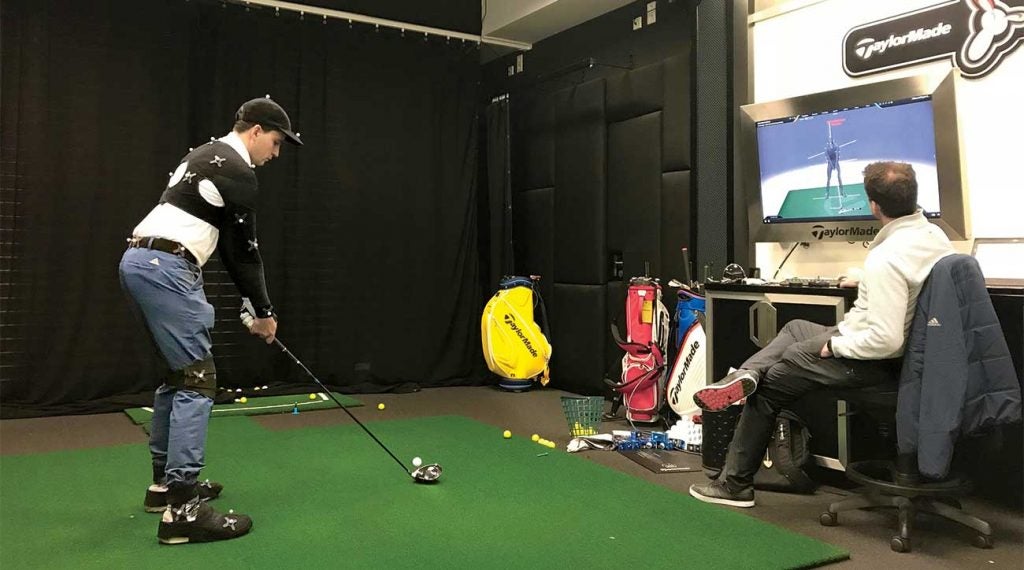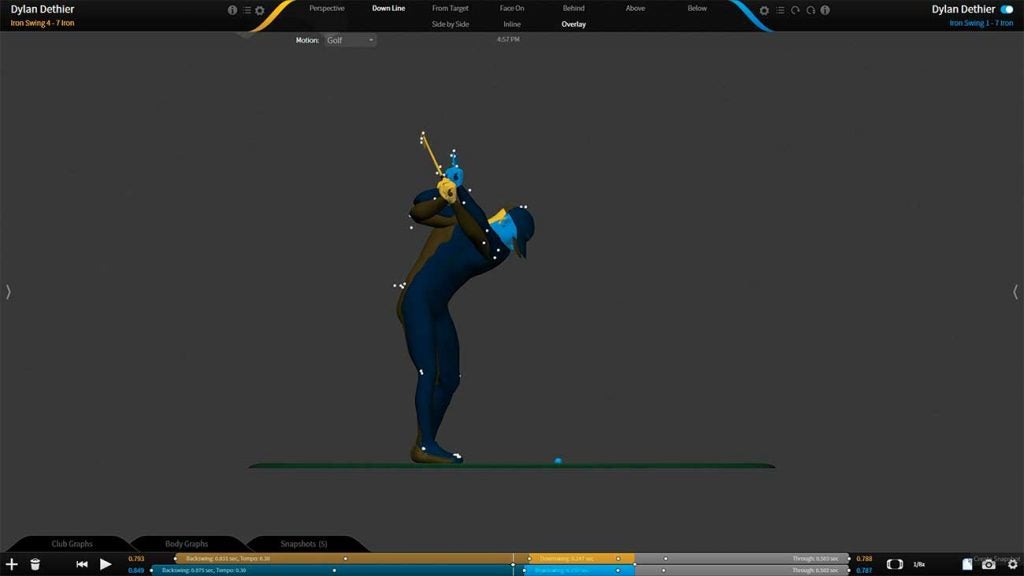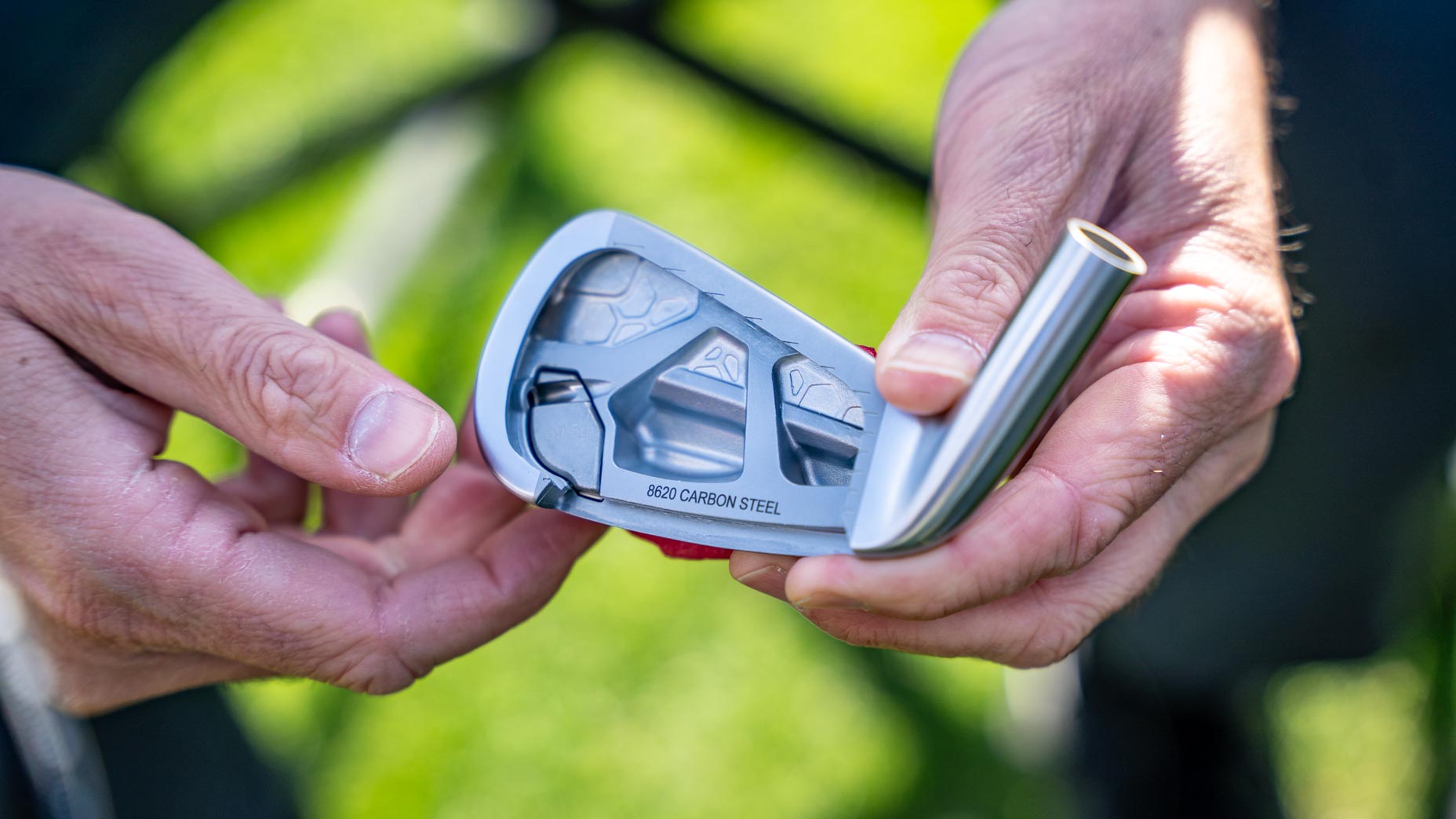 5 can’t-miss gift ideas for Mom from Stitch Golf
5 can’t-miss gift ideas for Mom from Stitch Golf
Hook up to a GEARS system and you’ll never see your swing the same again
Like any young golfer warming up for any old golf lesson, I strode onto the driving range at Rock Hill G&CC in Manorville, N.Y., to loosen up. Shaking off the rust of an 80-minute car ride from Manhattan, I turned to a typical warmup routine, wedges to irons to driver. As I got to the longer clubs, I settled on a swing thought — slow on my takeaway, hold the follow-through — which seemed to work relatively well. Why? Hard to say, beyond the fact that it felt right. The answer to an internal question — “What feels right?” — has always been my guiding light.
But there was nothing “any old” about this lesson. After I’d begun to work up a sweat on the outdoor range, I was summoned to Rock Hill’s modest pro shop and into head pro (and GOLF Top 100 Teacher) Michael Jacobs’s not-so-modest GEARS (Golf Evaluation and Research System) studio, and the way I thought about my golf swing suddenly changed. What’s feel? What’s real? I was about to find out, in three dimensions.
In the iPhone age, plenty of golfers regularly watch videos of their swings, often in slo-mo. Pros do it, too, and make video-based changes in near-real time. So what makes GEARS different? Basically, there’s seeing — and then there’s seeing. Jacobs’s system delves in the latter. A typical GEARS setup consists of eight 1.7-megapixel cameras, each firing at 360 frames per second. Do the math and that essentially adds up to just shy of 9,000 images of every single swing you take on the system.
How it works can be attributed to the magic of motion-capture, which gathers input from some two dozen sensors placed around my body, the sort you’ve seen on Steph Curry getting tracked for NBA 2K19 graphics, or actor Andy Serkis playing Gollum in Lord of the Rings. Director of GEARS Sports Michael Neff attests that it’s the most accurate system on the planet. Tough to argue.

Once you’re on the receiving end of a GEARS diagnosis, it’s difficult to overstate just how much information suddenly becomes available about your movements. In Jacobs’s studio, my own avatar popped up on the monitor, mimicking my motion in real time. As I took my first swings, numbers appeared — the usual ones, like clubhead speed. Then, others I’ve never heard of, like degrees of rib-cage rotation. Grip speed. Shaft droop.
I felt suddenly overwhelmed by the lines of data before me, but Jacobs reassured me: that’s why he was there, to turn an information flood into a lethal weapon.
I took another swing, and immediately Jacobs, planted in the corner, pointed something out: I was swaying unnecessarily on my backswing, wasting motion in the process. This wasn’t his opinion, up for debate. This was based on the scientific data of successful pros’ swings, brought home by a 3-D overlay of my swing over that of Jonas Blixt. “This isn’t something you have to trust me on,” Jacobs pointed out. “It’s just here in front of you.”
ADVERTISEMENT

He toggled between different views, using visuals and data to show details of my motion and club delivery, both the good and the bad. Within minutes, he had me staying stiller, swinging at what felt like 70 percent—and hitting the ball just as far as I had with my initial full swing.
That’s why Jacobs likes to book clients for three hours to get started on the system. Simplifying things can take time.
GEARS feels an awful lot like the future, except it isn’t — it’s the present, in nearly 50 locations in the U.S. and Canada alone. Not just for the golf swing, but for the baseball swing, and the optimal basketball jumper, and the perfect football punt.
Jacobs is a true believer, so much so that he’s penned two books on the subject. The first, Swing Tips You Should Forget, states his case. “Traditional golf tips are often incomplete, outdated or just plain wrong,” he says. He’s right, of course. The player’s swing should dictate the tip, not the other way around.
The era of big golf data is here. Ignore it at your own risk.
ADVERTISEMENT






